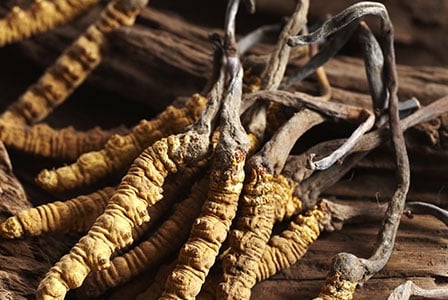
Although many North Americans find the idea of eating bugs gross, edible insects are a nutritious and environmental choice.
While many people in North America and Europe may find the idea of edible insects too disgusting to try, the idea of entomophagy, or eating insects, may slowly be gaining ground. The United Nations (UN) expects the global population to grow to more than 9 billion by 2050. To achieve sustainability as a result of this population explosion, the UN suggested that people start adding edible insects to their diets in order to boost nutrition and reduce pollution.
Insects on the menu
Grasshopper salad? Locust porridge? Cricket protein bars? In North America, we get most of our protein from meat, dairy, nuts, beans, and legumes. But as the global population continues to grow and puts more pressure on our food supply, where we get our protein could be changing.
There are about 1,900 insect species that have been used as food. According to Julieta Ramos-Elorduy Blásquez, a professor at the Institute of Biology at the National Autonomous University of Mexico and one of the world’s leading authorities on edible insects, there are 547 species of edible insects in Mexico alone. Researchers have found mayflies, dragonflies, grasshoppers, crickets, beetles, butterflies, bees, ants, and even the bane of many Canadians’ summers—mosquitoes—to be edible.
Despite the aversion North Americans have to edible insects, we already use and may enjoy these little critters. One of the most famous culinary insects, the mezcal larvae, is placed in bottles of mezcal liquor in Mexico. Cordyceps, a caterpillar whose body is taken over by a fungus, is readily found on the shelves of your local health food store and is sometimes used for its studied antitumour effects.
Bugs go mainstream
Protein bars
Edible bugs may soon be out of the realm of quirky and novel gastronomic experiences. Exo, a US-based company, recently raised almost US$55,000 on the popular crowdfunding platform Kickstarter to start producing cricket protein bars. Exo uses about 25 slow roasted and milled crickets in each bar and has developed flavours such as cacao nut, peanut butter and jelly, and cashew ginger Moroccan spice.
Exo joins another cricket protein bar maker Chapul, whose bars are available on the shelves of health food and specialty food stores throughout the US and so far in Canada at one location in Victoria, BC. Chapul’s ingredients would make any food purist happy; the bars contain only organic dates, cocoa, chapul cricket flour, organic espresso roast coffee beans, and cayenne.
Main courses
Some North American restaurants, particularly those serving Latin American or Asian cuisines, are increasingly offering insects on their menus. Don Bugito, an edible insect food truck travelling around San Francisco, has a menu offering two organic blue corn tortillas filled with crispy wax moth larvae sautéed in garlic and pasilla peppers with red pickled onions, salsa, and queso fresco, and a side of jicama salad. So while this sounds almost mouth-watering, how do these creepy crawlers stack up in terms of nutrition?
A nutritional hit
Studies on insects show that they’re little nutritional powerhouses. They are rich in proteins, fat, vitamins, and trace minerals. A complete protein, they contain all the essential amino acids, and they are also high in micronutrients such as iron, calcium, and B vitamins. Researchers found that bugs’ protein content ranges from 43.9 percent to 77.1 percent, depending on the insect. That’s similar to the protein content of soybean, chicken, eggs, and beef, with only fish having more protein per kilogram.
Edible insects were also found to have more essential fatty acid content than animal fat. Essential fatty acids are essential at all stages of life ranging from the healthy development of the brain in childhood to the management and treatment of chronic disease in old age. Researchers also found that edible insects, especially species belonging to the order Orthoptera, which includes crickets, grasshoppers, and locusts, are rich in vitamins and minerals such as vitamin C, zinc, magnesium, potassium, and calcium.
While the nutritional aspects of edible insects are important, the UN says the environmental benefits of growing insects for food include less pollution, poverty reduction in the developing world, and food security.
Kind to the environment
Insects simply pollute less. According to Exo, the cricket bar company, crickets produce 80 times less methane than greenhouse gas-contributing cattle. Producing insects also uses less of one of our most precious resources, water.
Insects also eat less. To produce 2.2 lb (1 kg) of cricket, they need to eat 3.7 lb (1.7 kg) of feed. Compare this to 5.5 lb (2.5 kg) of feed chickens need to eat, or the 22 lb (10 kg) cows need to eat to produce just one kilogram of beef.
As the global population continues to grow at a rapid pace, there is an increased demand for food, but we have limited land to produce it. Livestock production uses about 70 percent of the world’s agricultural land and produces 10 to 25 percent of the world’s total greenhouse gas emissions. We have more people on the planet who are living longer, and they’re eating a more Western-style, meat-heavy diet.
Getting over the “yuck” factor
Edible insects are a challenging product to market, but negative associations with certain foods can be overcome. Indeed, eating live animals such as oysters and raw fish in the form of sushi is now commonplace.
North Americans may need some coaxing with data on insects’ health and environmental benefits before they start serving insects on their dinner plates. However, researchers in Thailand discovered that local people consume edible insects not because they are environmentally friendly, nutritious, or relatively inexpensive, but simply because they taste good.
Education on nutritional and ecological issues associated with edible insects can partly overcome the aversion toward them. Researchers looked at peoples’ attitudes toward insects and found that their responses were polarized; people found eating insects either disgusting or interesting.
While edible insects are accepted as a normal part of the diet on many continents, there are still major barriers in Western countries to acceptance of this food group. Edible insects are enticing a few adventurous people to experience diversity in food culture.
Or perhaps insects just need to be rebranded. Insects belong to the phylum Arthropoda, which also includes shrimp, lobsters, and crabs. So while the thought of eating a cricket may turn one’s stomach, we already quite enjoy its closest relatives. a
Culinary options
Insect eggs to adults are eaten, although most restaurants serve larvae and pupae. Common ways of cooking insects include
- stewing, braising, and roasting
- boiling and steaming
- frying and deep-frying
Crickets are one of the most popular insects for eating. Cleaned and toasted in oil with garlic, lemon, and salt for flavour, they’re a common food ingredient among the urban population in Oaxaca, Mexico.
Fully mature, highly nutritious caterpillars are considered a delicacy in Mexico. They can be deep-fried or braised, seasoned with a spicy sauce, and served in a tortilla.
Not all insects are edible. Some contain toxins, and some people have allergies to insects.



